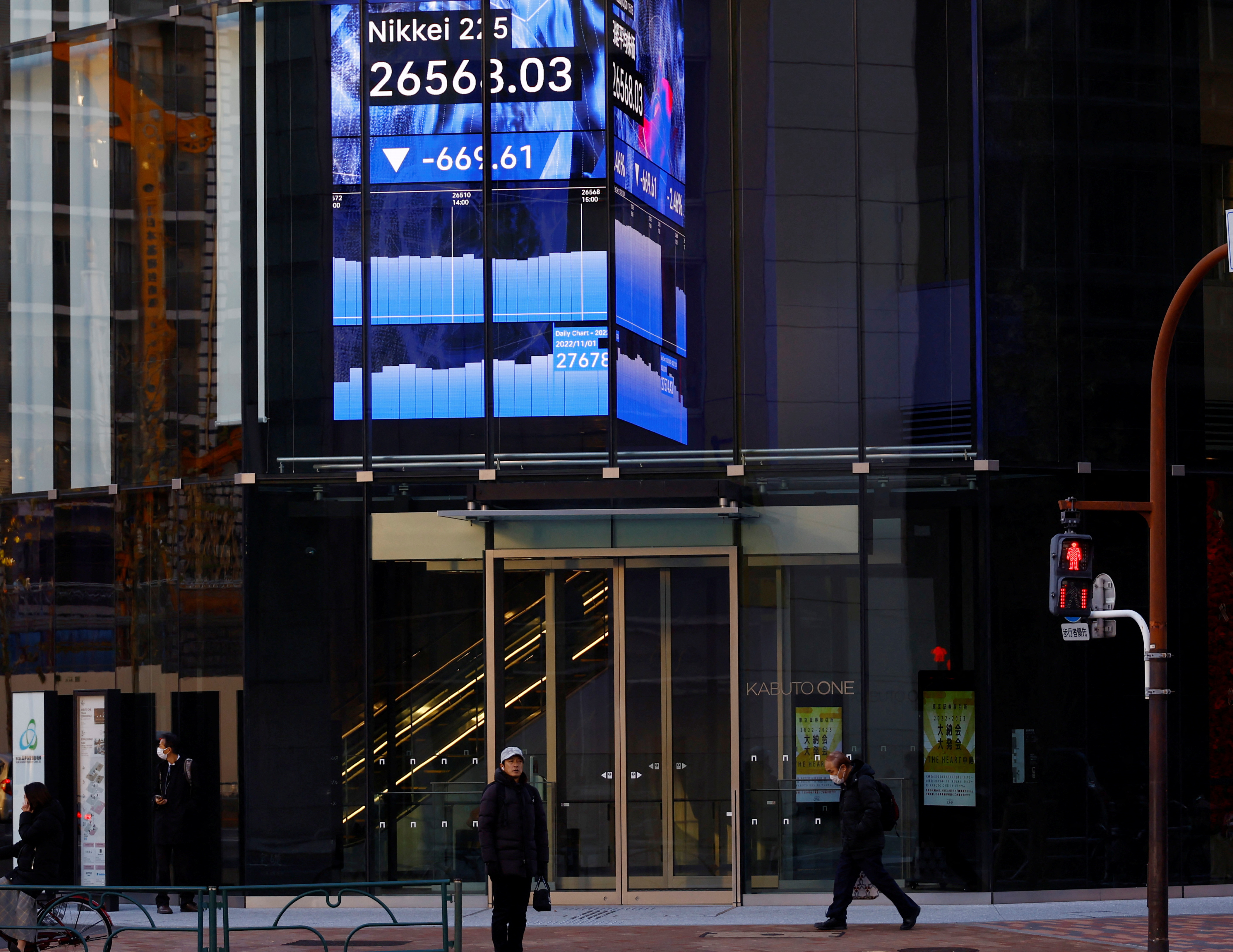
Asian share markets mostly stabilised on Tuesday after steep losses in the past 24 hours, while the U.S dollar remained elevated as investors considered the prospects for interest rates to remain higher for longer in many developed economies.
MSCI’s broadest index of Asia-Pacific shares outside Japan (.MIAPJ0000PUS) was up 0.4%, after U.S. stocks ended the previous session with mild losses.
Australia’s S&P/ASX200 (.AXJO) was trading higher ahead of the Reserve Bank’s decision but slid into negative territory after the official cash rate was raised by 25 basis points. The benchmark index closed down nearly 0.5%.
Japan’s Nikkei stock index (.N225) also erased initial gains to ease about 0.1%.
Hong Kong’s Hang Seng Index (.HSI) was trading 0.67% higher and China’s bluechip CSI300 Index (.CSI300) was up 0.07%.
The RBA delivered on expectations to extend its monetary tightening campaign as it ordered a ninth consecutive rate rise.
Australia’s cash rate now stands at 3.35%, the highest in a decade, and the central bank indicated more hikes could not be ruled out.
In early European trades, the pan-region Euro Stoxx 50 futures were up 0.17% at 4,218, German DAX futures were up 0.09% at 15,409, FTSE futures were up 0.09% at 7,815.
U.S. stock futures, the S&P 500 e-minis , were up 0.13% at 4,128.8.
“Sentiment in markets is dominated by central banks and the repricing of rates yet again,” Kerry Craig, JPMorgan Asset Management’s global market strategist, told Reuters.
“Equities have had a strong run since the start of the year so seeing an air pocket emerge now is no major surprise.
“It’s a quiet week for economic data globally and when that is the case uncertainty over interest rates is the dominant theme among investors.”
In the Asian trading session, the yield on benchmark 10-year Treasury notes hit 3.6192% compared with its U.S. close of 3.632% on Monday.
The two-year yield , which rises with traders’ expectations of higher Fed fund rates, touched 4.4267% compared with a U.S. close of 4.456%.
The repricing of higher rates began after strong U.S jobs growth in January, with employment rising 517,000, more than double economists expectations. The unemployment rate hit 3.4%, the lowest in more than 53 years.
Investors will be closely watching a speech by Federal Reserve Chairman Jerome Powell at the Economic Club of Washington later on Tuesday.
Overnight on Wall Street, the Dow Jones Industrial Average (.DJI) fell 0.1%, the S&P 500 (.SPX) lost 0.61% and the Nasdaq Composite (.IXIC) dropped 1%.
“The market has repriced to expect that the Fed Funds rate will peak just above 5% and it now only anticipates very limited rate cuts, just one of 25 basis points by the end of this year,” ANZ economists wrote.
“It’s very clear that sentiment is fragile and data dependent, and this new defensive posture may have further to run near term as risk positions are scaled back.”
The dollar eased 0.28% against the yen to 132.28 , after touching a three-week high of 132.9 during the U.S trading session.
The European single currency was up 0.1% on the day at $1.0739, having lost 1.13% in a month.
The dollar index , which tracks the greenback against a basket of major trading partner currencies, was down marginally at 103.45 from its U.S. trading levels. However, it remains well above its recent low of 101.55 on Feb 3.
U.S. crude ticked up 0.86% to $74.75 a barrel. Brent crude rose to $81.6 per barrel.
Gold was slightly higher. Spot gold was traded at $1873.65 per ounce.

